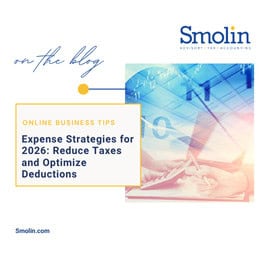The 2026 Social Security wage base has been released. What’s the tax impact on employees and the self-employed? Let’s take a look.
FICA tax 101
The Federal Insurance Contributions Act (FICA) imposes two payroll taxes on wages and self-employment income — one for Old-Age, Survivors, and Disability Insurance, commonly known as the Social Security tax, and the other for Hospital Insurance, commonly known as the Medicare tax.
The FICA tax rate is 15.3%, which includes 12.4% for Social Security and 2.9% for Medicare. If you’re an employee, FICA tax is split evenly between your employer and you. If you’re self-employed, you pay the full 15.3% — but the “employer” half is deductible.
Above the Threshold? No Social Security Tax Owed
All wages and self-employment income are generally subject to Medicare tax. But the Social Security tax applies to such income only up to the Social Security wage base. The Social Security Administration has announced that the wage base will be $184,500 for 2026 (up from $176,100 for 2025). Wages and self-employment income above this threshold aren’t subject to Social Security tax.
No Employer Share, But Withholding Still Required
Another payroll tax that higher-income taxpayers must be aware of is the additional 0.9% Medicare tax. It applies to FICA wages and self-employment income exceeding $200,000 ($250,000 for joint filers and $125,000 for separate filers). There’s no employer portion for this tax, but employers are required to withhold it once they pay an employee wages for the year exceeding $200,000 — regardless of the employee’s filing status. (You can claim a credit on your income tax return for withholding in excess of your actual additional Medicare tax liability.)
What will you owe in 2026?
For 2026, if you’re an employee, you’ll owe:
- 6.2% Social Security tax on the first $184,500 of wages, for a maximum tax of $11,439 (6.2% × $184,500), plus
- 1.45% Medicare tax on wages up to the applicable additional Medicare tax threshold, plus
- 2.35% Medicare tax (1.45% regular Medicare tax plus 0.9% additional Medicare tax) on all wages in excess of the applicable additional Medicare tax threshold.
Self-Employed in 2026? Know Your Payroll Tax Obligations
For 2026, if you’re self-employed, you’ll owe:
- 12.4% Social Security tax on the first $184,500 of self-employment income (half of which will be deductible), for a maximum tax of $22,878 (12.4% × $184,500), plus
- 2.9% Medicare tax on self-employment income up to the applicable additional Medicare tax threshold (half of which will be deductible), plus
- 3.8% Medicare tax (2.9% regular Medicare tax plus 0.9% additional Medicare tax) on all self-employment income in excess of the applicable additional Medicare tax threshold. (Half of the 2.9% portion will be deductible; none of the 0.9% portion will be deductible.)
The payroll tax deduction for the self-employed can be especially beneficial because it reduces adjusted gross income (AGI) and modified adjusted gross income (MAGI). AGI and MAGI can trigger certain additional taxes and the phaseouts of many tax breaks.
Have questions?
Payroll taxes get more complicated in some situations. For example, what if you have two jobs? Payroll taxes will be withheld by both employers. Can you ask your employers to stop withholding Social Security tax once, on a combined basis, you’ve reached the wage base threshold? No, each employer must continue to withhold Social Security tax until your wages with that employer exceed the wage base. Fortunately, when you file your income tax return, you’ll get a credit for any excess withheld.
If you have more questions about payroll taxes, such as what happens if you have wages from a job and self-employment income, please contact a Smolin Representative. We can help you ensure you’re complying with tax law while not overpaying.








